Are woodworms really worms? The little holes that you will sometimes see in antique furniture, skirting boards and support timbers are often attributed to creatures we like to call ‘woodworms’, but in fact, they are not actually caused by ‘worms’ of any kind.
The holes themselves are exit tunnels created by the larval forms of a wide variety of insects, mostly beetles but also some wasps. It is true that in this early stage they look a little like worms, but when you are wondering about whether or not you have woodworm, you aren’t looking for something wiggling or with a slime trail, but something with six legs, an outer shell, and possibly wings. This is why properly and correctly identifying woodworm is so important.
When choosing the particular course of woodworm treatment that your house and your timbers may need, knowing the specific type of woodworm involved is vital. It can tell you everything from how strong a chemical agent you will need, to how wide an area that chemical will need to be deployed over, to how quickly you will need to act. Although the holes themselves are exiting passages, that does not mean that every last insect has already left. That is why extermination is so important.
If too many eggs or larval insect forms are still in place then future problems may occur. The insects may be making your home’s support structures their habitat now but preparing to leave the nest later. When they do, the structural integrity of your home’s woodwork itself is in potential jeopardy.
If you suspect that woodworm may have arrived in your home, you can get a clearer idea of exactly what you are dealing with from the following outline. To know for sure just what your home needs, contact Garratt’s Damp & Timber today for our expert and impartial advice.
| Identifying Woodworm | Timber attacked | Damage | Signs |
|---|---|---|---|
| Common Furniture Beetle
(Anobium Punctatum) |
|
|
|
| Death Watch Beetle
(Xestobium Rufovillosum) |
|
|
|
| Woodboring Weevils
(Pentarthrum Huttoni Euophryum Confine) |
|
|
|
| Powder Post Beetle
(Lyctus Brunneus) |
|
|
|
| House Longhorn Beetle
(Hylotrupes Bajulus) |
|
|
|
| Wharf Borer
(Nacerdes Melanura) |
|
|
|
| Bark (Waney Edge) Borer
(Ernobius Mollis) |
|
|
|
| Wood Wasp
(Urocerus Gigas) |
|
|
|
| Fan Bearing Wood Borer
(Ptilinus Pectinicornis)
|
|
|
|
| Pinhole Borers
|
|
|
|

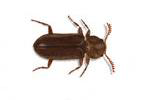
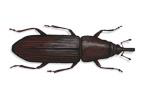
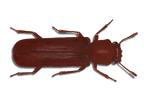
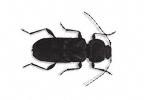



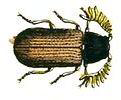
 (There are numerous types of Ambrosia Beetle)
(There are numerous types of Ambrosia Beetle)






